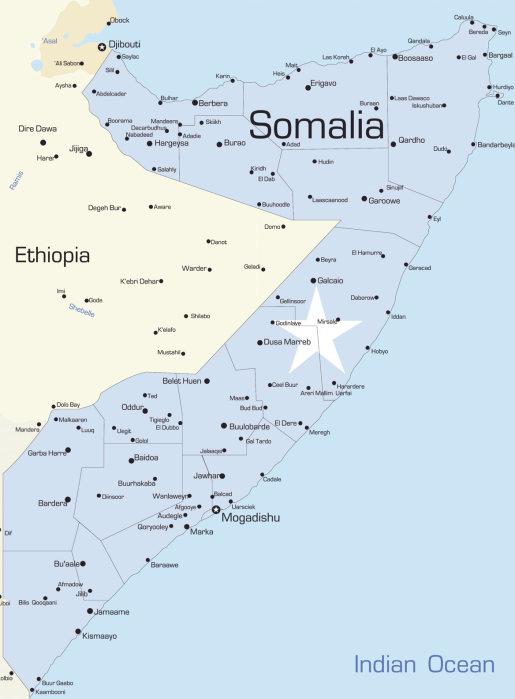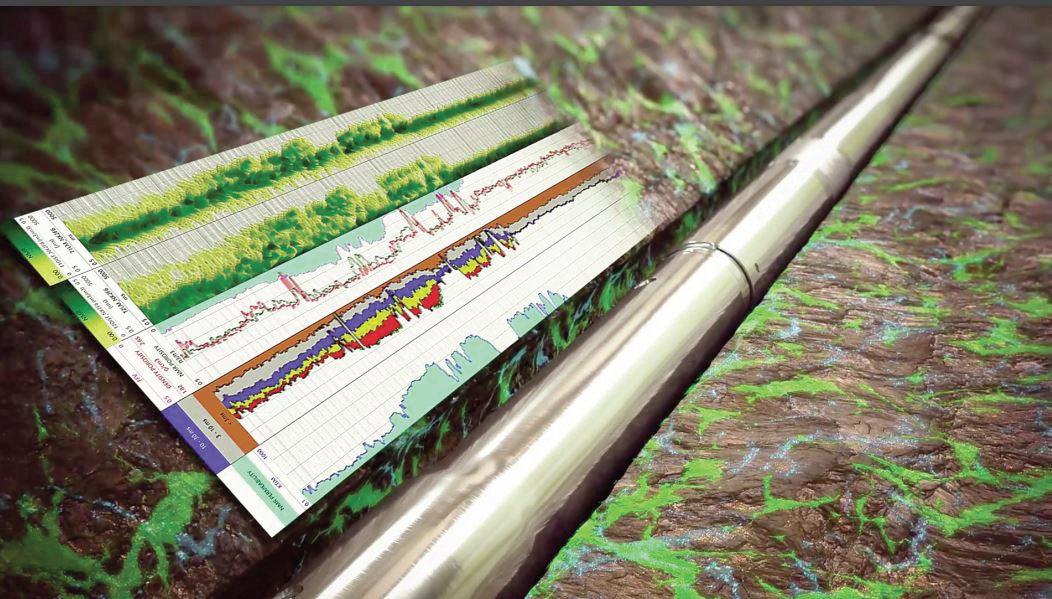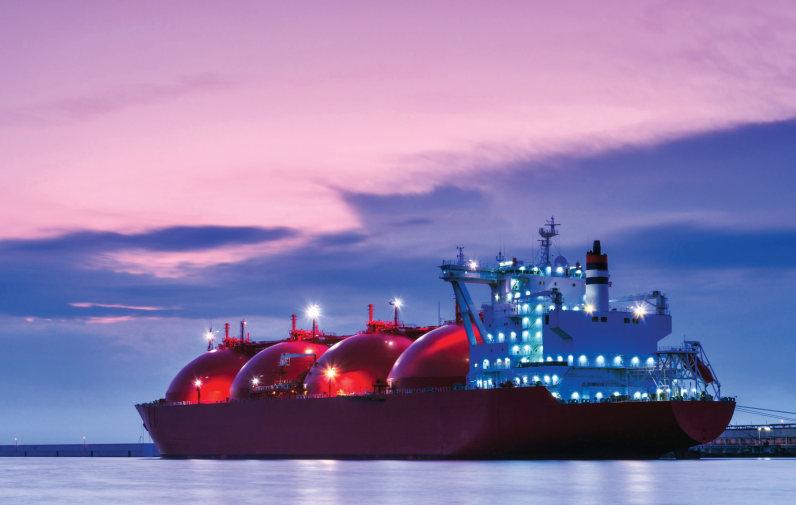
6 minute read
East Africa
IS SOMALIA THE NEXT EXPLORATION HOTSPOT?
After nearly three decades of civil war, coupled with multiple sovereignty issues, Somalia is now open to international majors. Although its petroleum industry is in the fledgling stage, exploration companies are confident of discovering crude oil in Africa’s most adventurous oil frontier.
THE UNTAPPED POTENTIAL and strategic location next to shipping lanes should draw the attention of oil players to Somalia in search of ‘elephant’ finds, as this new province has opened its offshore waters for exploration and development (E&D). The Somali government in March 2020 signed a preliminary roadmap with a Shell/ExxonMobil joint venture for E&D of potential offshore hydrocarbons reserves after receiving US$1.7mn for the lease of their concessions. Besides oil giants, small companies who are aggressive risk-takers are also keen to get a foothold in unexploited oil basins of Somalia.
Italian and British geologists first identified oil seeps during the colonial era. Exploration began in 1948, when Sinclair Oil, Conoco and Agip (now ENI) discovered eight petroleum basins: Daban; Migiurtinia; Mudugh; Mogadishu; El-Wak Mandera; Ogaden; and Chismaio and Lamu Basin – with columns of five-six kilometres in several areas, and ranging in age from Jurassic or Triassic to Tertiary (several million years ago).
Country geology
Mature, oil-prone source beds plus potential reservoir rocks and structures exist in a variety of geological settings, as well as a rich variety of trapping configurations – both sandstone and carbonate with large potential closures. Another positive is the presence of direct hydrocarbon indicators, such as visible flat spots, (Petroleum Economist). Some of the eight sedimentary basins have sediment thickness exceeding five km and contain good reservoir rocks, seals and traps necessary for hydrocarbons to deposit. The Jurassic separation of Somalia and the Madagascar-SeychellesIndia block (several million years ago) has created oil-prolific deposits that share many characteristics with the Ogaden basin (South Africa), and partially also the Rovuma basin (Mozambique). Geologists divide ‘offshore’ Somalia, overlain by the current seismic grid into three basins, each defined by their own individual structural regimes: Obbia basin in the North, Central Coriole basin, and Southern Juba-Lamu basin.
The northern region has signs of limestone reef build-ups, sandstone tilted fault blocks and large anticline folds of rock, all within close proximity to oil-rich wells. The temperature in the north increases rapidly that allows the Jurassic rocks to be prime sources to generate oil, as opposed to natural gas. Additionally, these Jurassic rocks are only around one to two miles below sea level.
While temperatures in the southern region are much cooler, and the potential oil-dense oceanic crust is two to 2.5 miles below sea level. Geoscientists have concluded that “the North and South might differ in temperature, depth and reservoir type; both areas appear to be rich in hydrocarbons and show great promise for producing great amounts of oil.” (Neil Hodgson, Somalia Awakes as East Africa’s Oil Province, December 2016).
Somalia also shares the geological structure of the Arabian Peninsula, however, the volumes of sediments in Somali basins are larger compared to the
Somalia has the longest coastline in Africa, which extends to 1,000 kilometres along the Red Sea and 1,900 kilometres along the Indian Ocean.
Image Credit: Adobe Stock
Arabian Peninsula. The bulk of the Indian Ocean margin lies within Somalia – it has around 58 oil blocks dotting its 3,000 kilometres coastline. Moreover, the area shares similar geological characteristics with Kenya, Tanzania and Mozambique, where sizeable discoveries of oil and gas were made over the last decade.
Recent Guyana and Suriname oil discoveries (South America) testify to high quality oil-prone source rocks deposited in a deepwater setting – the striking resemblance is believed to be present within the deepwater Somali basin. Almost entire offshore/onshore parts of Somalia remain unexploited. Geologists judge the probability of finding good quality reservoirs reasonably high.
Seismic imaging
There is some evidence of a working petroleum system offshore Somalia. Expert geographical assessments suggest the offshore basin boasts billions of barrels of oil. A 2017 study revealed that Somalia is home to 20,582.75 kilometres of untapped reserves. Geographically, there are large oil and gas accumulations in the wider region. Explorers analysing new seismic data recognise the potential of discovering reserves matching those of its neighbours in East Africa.
The results of two new 2D seismic surveys conducted by British firms Soma Oil & Gas and Spectrum Geo (covering an offshore area exceeding 120,000 sq km) suggested Somalia holds promising oil reserves of up to 100bn barrels along the Indian Ocean coast, between the cities of Garad and Kismayo. The extensive 2D seismic data has revealed ‘extraordinary’ and ‘gigantic’ structures.
Meanwhile, another subsurface data processing company, Norway-based TGS, estimated unrisked resources for the Somali basin with a strong possibility of oil-prone prospects offshore along the whole length of the Somalia margin, potentially holding 30bn barrels. TGS had acquired 40,000 kilometres of 2D data – covering the seven blocks currently on offer. Recent 2D seismic surveys show the area to be full of hydrocarbon reservoirs, and potential oil wells – strong indications of widespread distribution of good quality source rocks.

The East African nation hopes to replicate the offshore exploration success enjoyed by Guyana in recent years.
Institutional building
The Somali government took several constructive steps to boost hydrocarbons exploration by ratifying in February 2020 a new Petroleum Law assisted by the International Monetary Fund (IMF). It provides a stable, long-term legal – regulatory framework to protect the investments of international oil companies (IOCs) as well as honouring all contracts signed in the last 30 years. Equally, governance has also strengthened – with the Somali Petroleum Authority being separated from Somali National Oil Company.
An internationally competitive Production Sharing Contract (PSC) model has adopted fiscal terms to specifically reflect Technical, Economic, Commercial, Operational and Political (TECOP) considerations. Somalia has opted for flexible upstream terms, whereby the royalty rate would fluctuate between 5% and 35% depending on oil-price, along with a profitability-based profit-sharing scheme – equitable for both national interest and IOCs.
Somalia hopes that promising geology, top quartile fiscal terms and an improving economy will induce IOCs to develop its offshore sector. The first ever licensing round for seven offshore blocks was opened on 4 August 2020, six months after the passing of Petroleum Law. It is due to end on 30 June 2021.
Caution
Somalia is among the few remaining unexplored oil frontiers globally, albeit highly prospective, however, investors should proceed with caution when entering ‘untested’ margins. Estimated resources are ‘probable’ or ‘possible’ but not ‘proven.’ The country carries political/security risks and suffers from a decrepit infrastructure. It also ranks the lowest out of 180 countries on the Transparency Initiative Corruption Index. “There are other challenges facing the development of Somalia’s oil reserves. The spending cuts announced by companies worldwide amid the Covid-19 pandemic are already taking their toll on exploration in Africa and may also affect the interest of operators in venturing into the frontier waters of “ an internally troubled state,” according to Rystad Energy.
In sum, Somalia could be the last of Africa’s oil gems. It hopes to replicate the extraordinary offshore exploration success enjoyed by Guyana in recent years. Some of the 58 oil blocks could prove “technically a recoverable” (i.e. proved reserves) contingent, however, on substantial upstream capital expenditure, high oil prices and much improved security for the global exploration industry.
Are we finally set to see the start of E&D activity in one of the world’s few untapped hydrocarbons frontiers? The time has come for IOCs to seriously consider exploring for oil and gas in Somalia.










